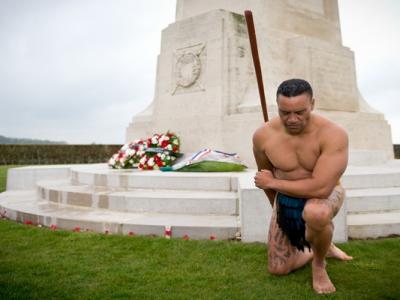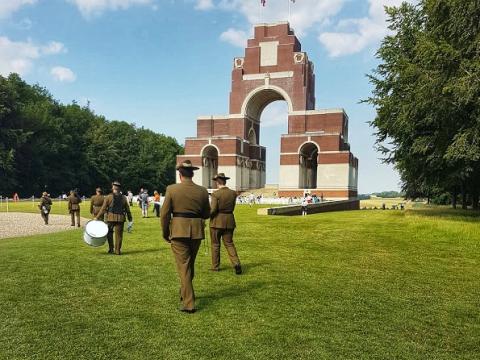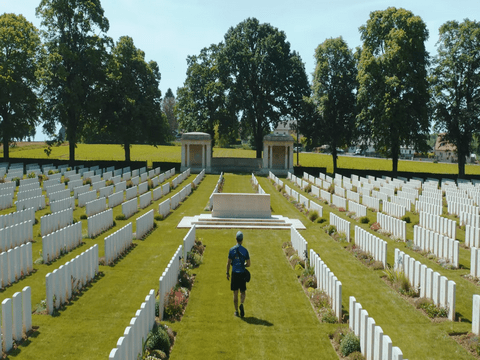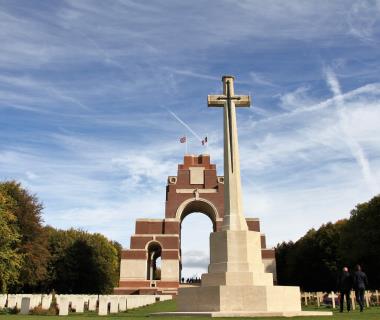A chapter of History
- 1916Battle of the Somme
- 1 Mcasualties
- 25nations
The Somme
During the war
The Somme was deeply affected by the passage of military troops during the First World War.
German forces arrived in Picardy and entered Amiens on the 31st August 1914, which was abandoned 8 days later.
The Somme front, held at this stage by the French army, lay along a north-south line passing close to the villages of Beaumont-Hamel, Thiepval, La Boisselle, Fricourt... while the Germans occupied the ridges above the valleys of the Ancre and the Somme.
In the aftermath of the war, there is almost nothing left of cities like Albert or Péronne. Then begins the time of reconstruction.
 ©SommeTourisme
©SommeTourisme


1916
Battle of the Somme
On the 1st July 1916, at precisely 7.30am, a few moments after the simultaneous explosion of several huge mines ('Hawthorn' in Beaumont-Hamel, 'Lochnagar' at La Boiselle...), the British and French infantry advanced from their trenches. In the British sector, the situation was disastrous : new and inexperience troops were shattered on the slopes of Beaumont-Hamel and Thiepval.
Next day, the number of casualties suffered on the 1st July proved to have been appalling : 58 000 men fell, including 20 000 killed. Thirty-two battalions had lost more than 500 men; the Newfoundlanders lost 700 men in thirty minutes.
Never before had Britain and her Empire faced a conflict of such proportions, never before had they suffered a military catastrophe on so great a scale.
A world arena
More than any other part of the front, the Somme became a world arena : the alliance between the French and the British in this department and the arrival of troops from different colonies concentrated more than twenty different nationalities here.

 ©SommeTourisme
©SommeTourisme ©Ronan Le Bideau
©Ronan Le Bideau © Samuel Crampon
© Samuel Crampon1918
A pivotal year
The German army was reinforced by the arrival of divisions transferred from the east : this was the year of the final German offensive on the 21 March.
On the 26th March, Presidents and Generals met in Doullens Town Hall, and decided to create a unified command.The British, French and American governments have conferred on General Foch the strategic control of military operations of the Allied forces.
Over the 24th, 25th and 26th April, the German breakthrough and advance towards Amiens was halted by Australian forces at Villers-Bretonneux.
The intervention of American troops in May 1918 at Cantigny helped to contain the German offensives of spring 1918 and raised Allied moral.
On the 4th July 1918 at Le Hamel, General Monash successfully led his Australian troops into a tactical battle that lasted only 93 minutes.
The Allied counter-offensive, which began with the Battle of Amiens on 8 August 1918, led to the Armistice being signed on the 11 November.
Useful information
on the Web
- First World War sites in the Somme : digital version
- Hidden Northeast France-Exploring the Western Front and beyond : digital version
- French Ministry of Defence - Mémoire des hommes : official website
- Commonwealth War Graves Commission (CWGC) : official website
- The Royal British Legion : official website
- The Anzac Portal : official website
- New Zealand WW100 : official website
- Veterans Affairs Canada : official website
Join us on Instagram !Somme1914_1918
 ACarrier
ACarrierWant to see the main sites of remembrance in the Somme ? Museums, memorials, battlefields and other sites to discover here !
Join the official account on Instagram : Somme1914_1918
Follow us on Facebook !Great War Centenary in the Somme

Want to know everything about the Somme Battlefields (events, sites, commemorations...) ? Follow the official page of the remembrance tourism in the Somme !
Follow us on Facebook : Great War in the Somme
En Direct des blogs Tortuga Videos
 Mathis BEHAEGEL - LA TORTUGA
Mathis BEHAEGEL - LA TORTUGAA velo sur les traces de la bataille de la Somme !
C’est accompagné de son vélo Franklin, que Mathis Behaegel, alias "La Tortuga", a emprunté la véloroute Vallée de Somme pour partir la découverte de l'est du territoire et l'histoire de la Bataille de la Somme. Au programme : Des paysages marqués par le conflit mondial, des rencontres avec des passionnés, des mémoriaux emblématiques de la destination et de la nature.
A découvrir en vidéo ET en podcast !
Pour visionner la vidéo, cliquez ici !
You'll like too
Museums and places of interest
Centre Sir John Monash
Remembrance sites
Mémorial de Thiepval de la CWGC
Remembrance sites



